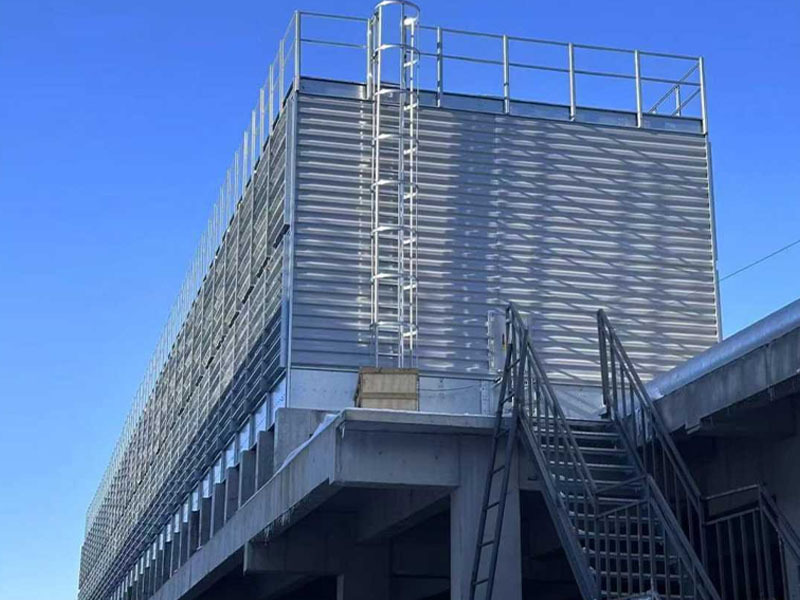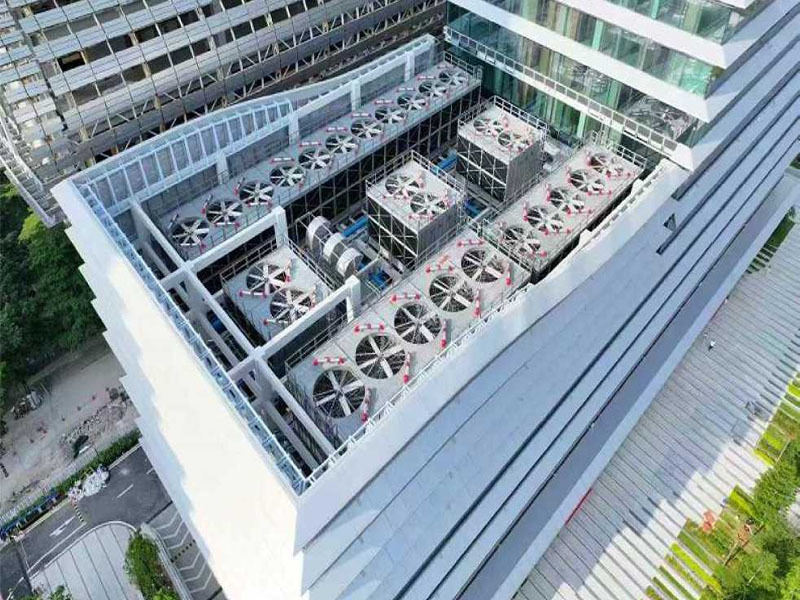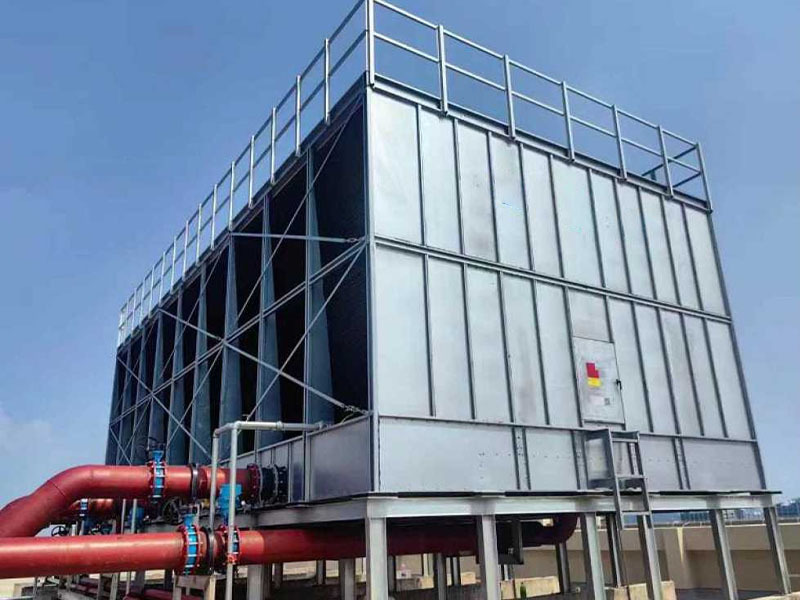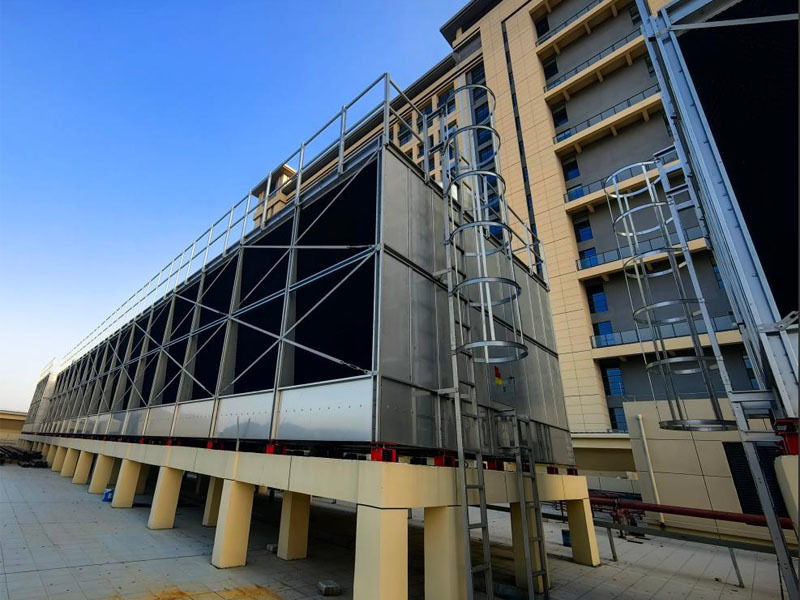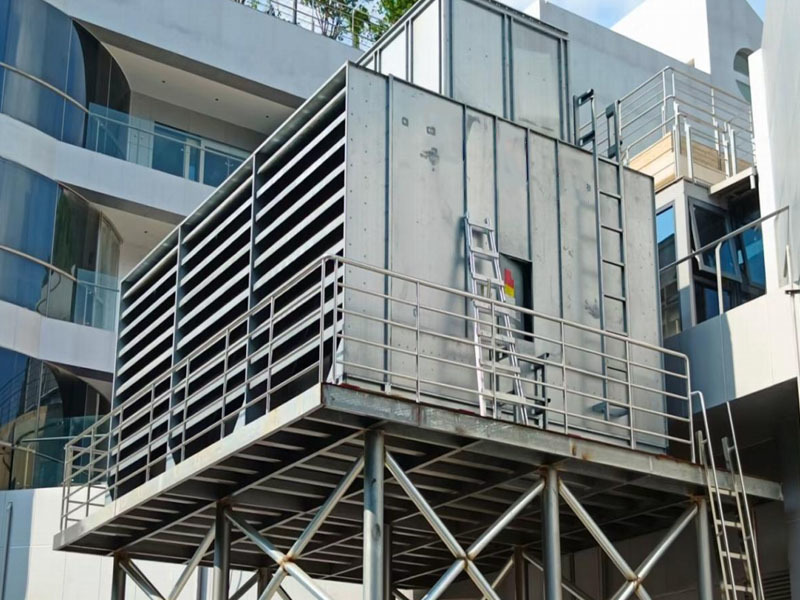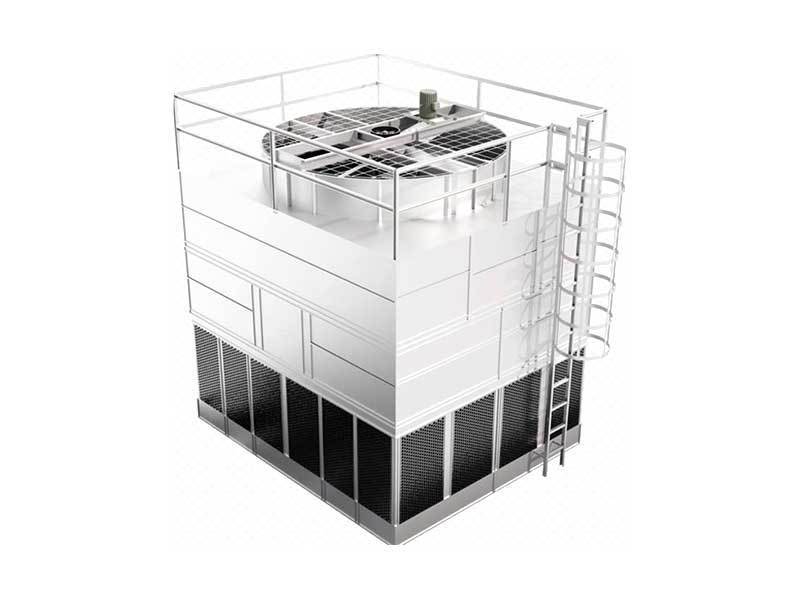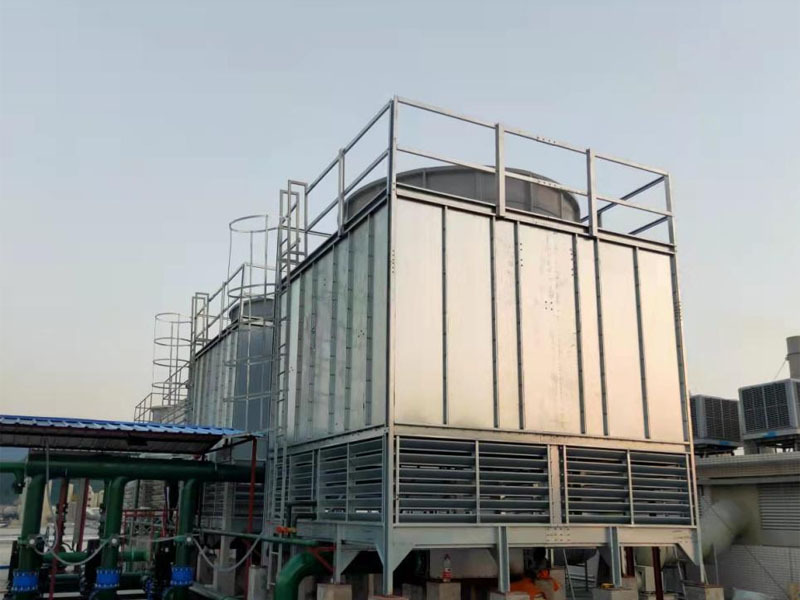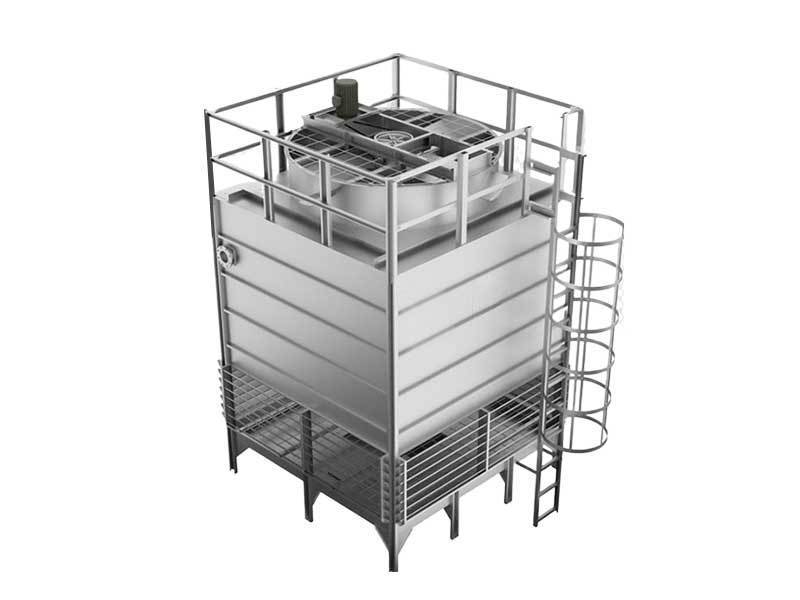Closed Counterflow Cooling Towers
Keywords:
Category:
- Product Description
-
### Closed-circuit Counterflow Cooling Tower
In modern industrial and commercial building refrigeration systems, cooling towers, as important heat exchange equipment, play a key role in discharging waste heat generated by industrial processes or air conditioning systems into the atmosphere. Among them, closed-circuit counterflow cooling towers, with their high efficiency, energy saving, and environmental protection characteristics, have become the preferred solution in many fields. This article will delve into the working principle, structural characteristics, application advantages, and maintenance management of closed-circuit counterflow cooling towers, in order to provide valuable reference for relevant industry professionals.
#### 1. Working Principle of Closed-circuit Counterflow Cooling Tower
The core of a closed-circuit counterflow cooling tower lies in its unique heat exchange mechanism. Unlike open cooling towers, the circulating water inside a closed-circuit cooling tower undergoes indirect heat exchange with the outside air through a heat exchanger (usually a coil), avoiding direct contact between the circulating water and the air, thus effectively reducing problems such as water evaporation, fouling, and microbial growth.
The term "counterflow" refers to the opposite direction of movement of the hot fluid (usually process cooling water) and the cooling air inside the cooling tower. Specifically, the hot fluid flows down through the inside of the coil, while the cooling air is drawn in from the bottom by the fan and flows upwards through the outside of the coil. This counterflow design maximizes the heat exchange area and time, improving heat transfer efficiency.
#### 2. Structural Characteristics
Closed-circuit counterflow cooling towers are mainly composed of the following key parts:
1. **Coil assembly**: As the core of heat exchange, the coil is usually made of corrosion-resistant materials, with process cooling water flowing inside and heat exchange with air outside.
2. **Fan system**: Provides the necessary airflow to ensure that cold air can effectively pass through the coils and carry away heat. High-efficiency and energy-saving fan design is the key to improving overall performance.
3. **Packing area** (some closed-circuit towers may not have this part): Although closed-circuit towers reduce direct water-air contact, some designs still use special packing to enhance heat and moisture exchange between air and water vapor, further improving efficiency.
4. **Water collector**: Located at the top of the tower, it is used to collect and recover the trace amount of water droplets carried by the airflow, reducing water waste.
5. **Control system**: The automated control system monitors and adjusts the cooling process to ensure that the tower operates in optimal condition, while also providing fault alarms and remote monitoring functions.
#### 3. Application Advantages
1. **Significant water saving effect**: Because the circulating water operates in a closed system, closed-circuit counterflow cooling towers can significantly reduce water evaporation loss compared to open towers, making them suitable for areas with water scarcity.
2. **Environmental protection**: Reduces thermal pollution and chemical emissions to the environment, while avoiding mineral deposits and microbial growth due to water evaporation, maintaining clean water quality.
3. **High efficiency and energy saving**: The counterflow design and optimized heat exchange efficiency allow closed-circuit towers to achieve efficient cooling with lower energy consumption, reducing operating costs.
4. **Wide applicability**: Whether in chemical, power, pharmaceutical, or data center industries, closed-circuit counterflow cooling towers can provide stable and reliable cooling solutions, especially in environments with strict water quality requirements or sensitive to environmental pollution.
#### 4. Maintenance Management
To ensure the long-term efficient operation of closed-circuit counterflow cooling towers, regular maintenance management is crucial. This includes, but is not limited to:
- **Cleaning and inspection**: Regularly clean the coil surface and water collector to prevent fouling from affecting heat exchange efficiency.
- **Water quality management**: Monitor and adjust the water quality of the circulating water, use appropriate corrosion inhibitors and bactericides, and maintain clean water quality.
- **Fan and motor maintenance**: Check the fan blade wear, lubricate the bearings, and ensure smooth motor operation.
- **Control system calibration**: Regularly test the control system to ensure sensor accuracy and normal automatic adjustment function.
- **Seasonal adjustment**: Adjust operating parameters such as air volume and water temperature set points according to seasonal changes to adapt to different cooling needs.
In summary, closed-circuit counterflow cooling towers, with their unique design concept, high efficiency and energy-saving performance, and wide applicability, occupy an important position in modern industrial cooling systems. Through scientific maintenance management, not only can the service life of the equipment be extended, but also the overall efficiency of the system can be further improved, contributing to the sustainable development of enterprises.
Inquiry
Service Hotline:
+86-138 2574 5855
+86-189 0261 0628
E-mail:dykj1688@yeah.net
Address: Guangdong Province, Huizhou City, Boluo County, Longxi Town, Longyuan Avenue, Dongyan Technology Industrial Park
Follow us

Scan with your phone
Copyright © Guangdong Dongyan Cooling Equipment Co., Ltd. All rights reserved.
Power by:www.300.cn | SEO | Privacy Policy

